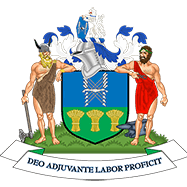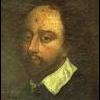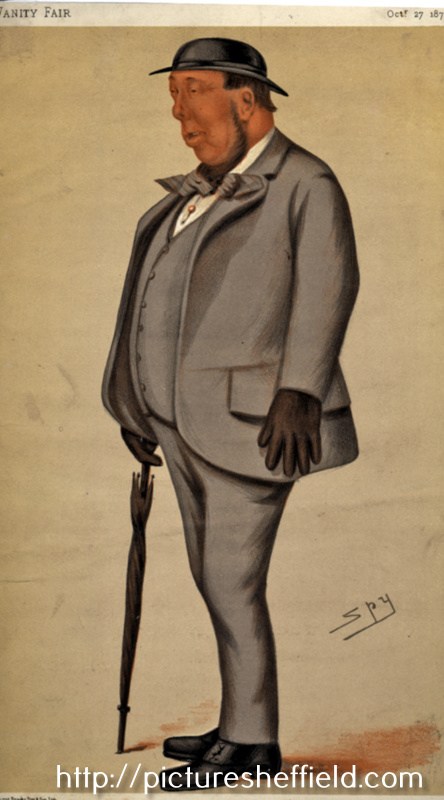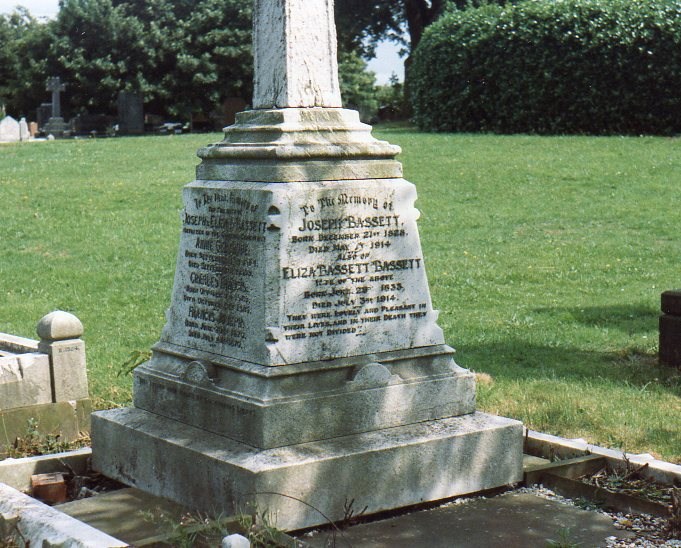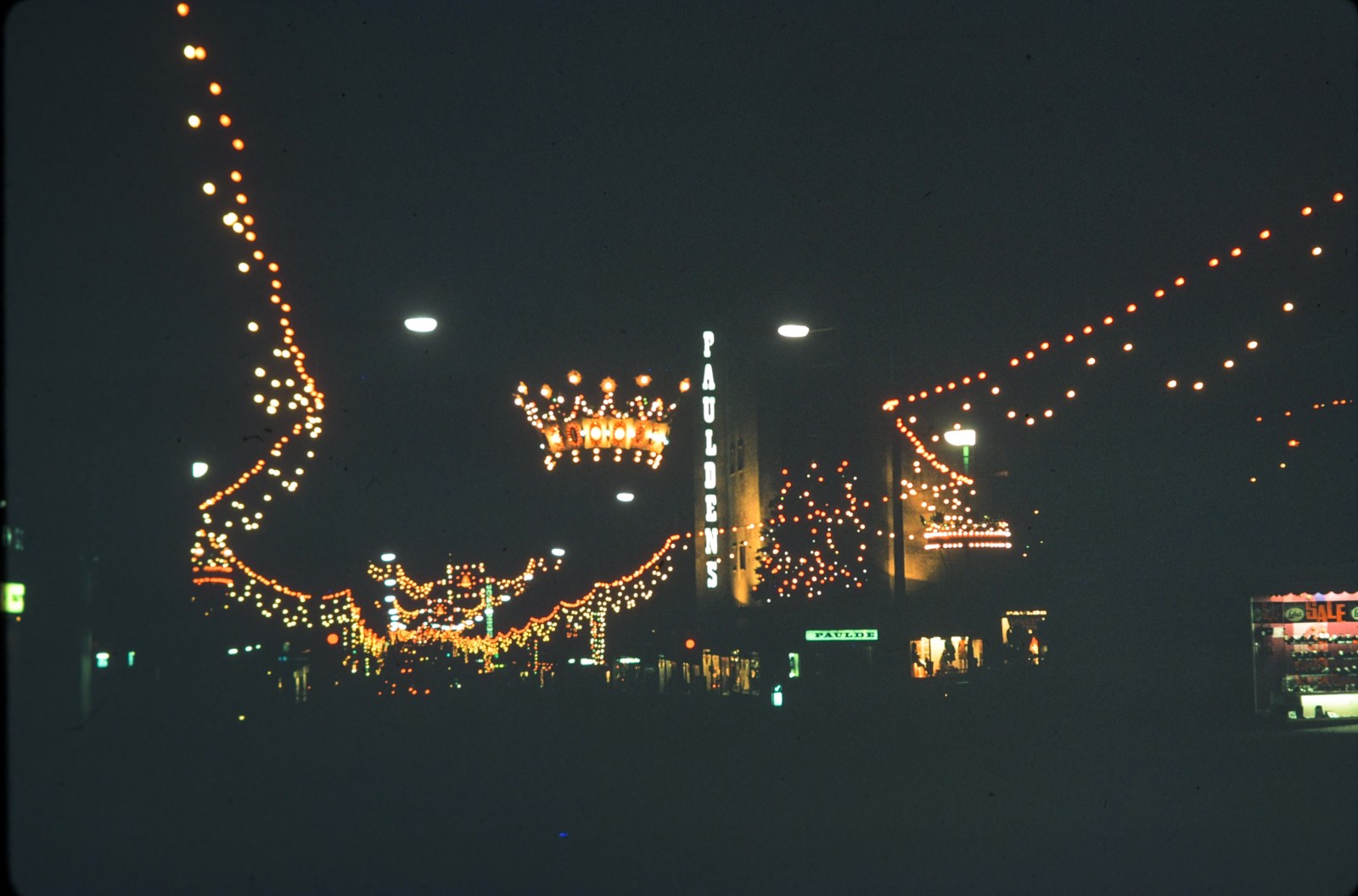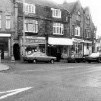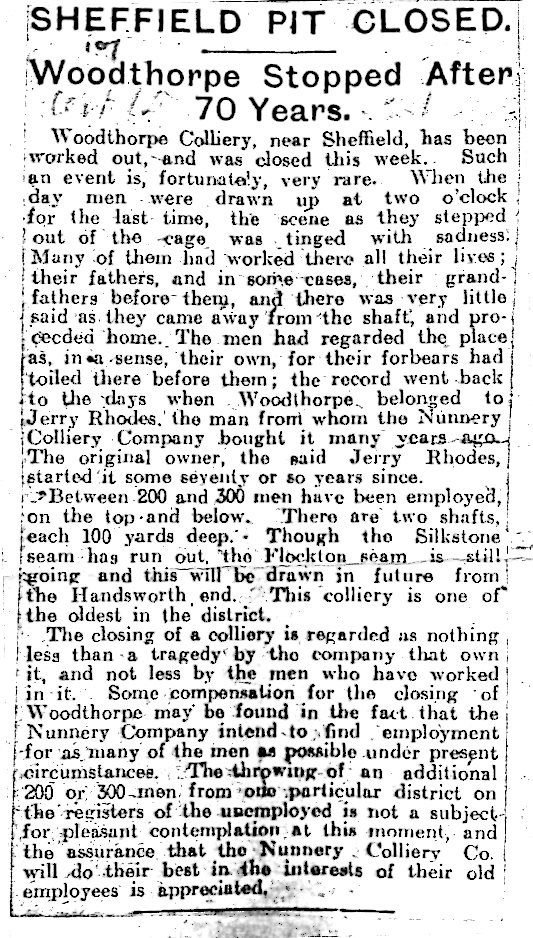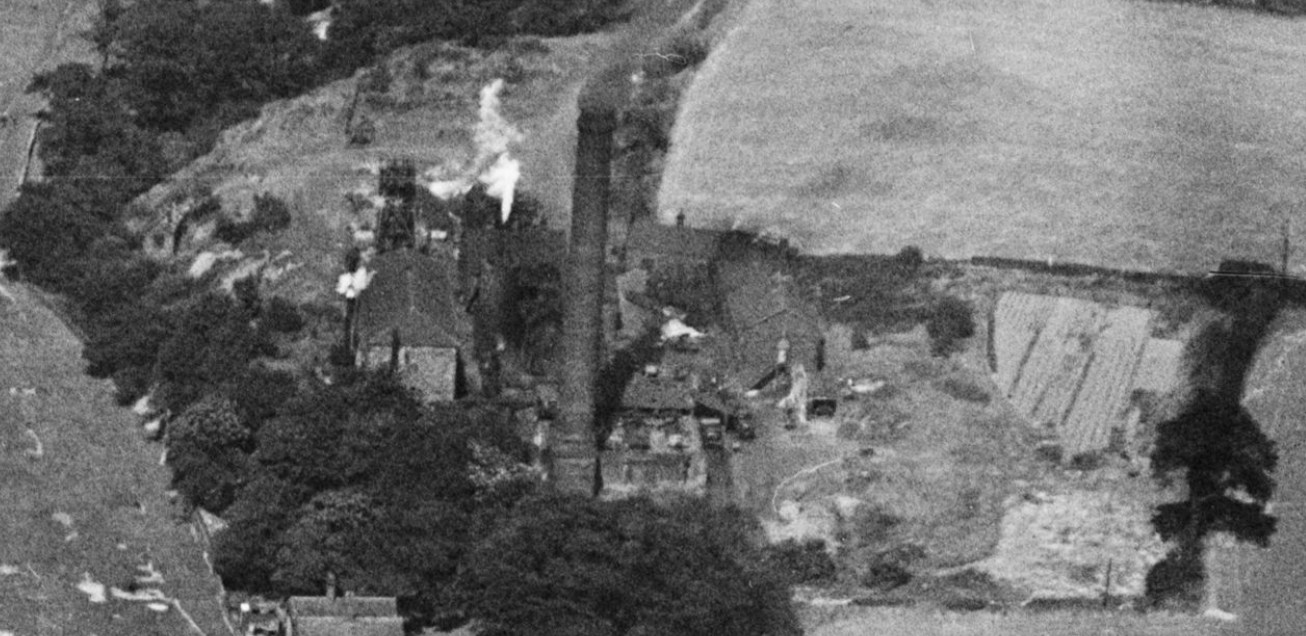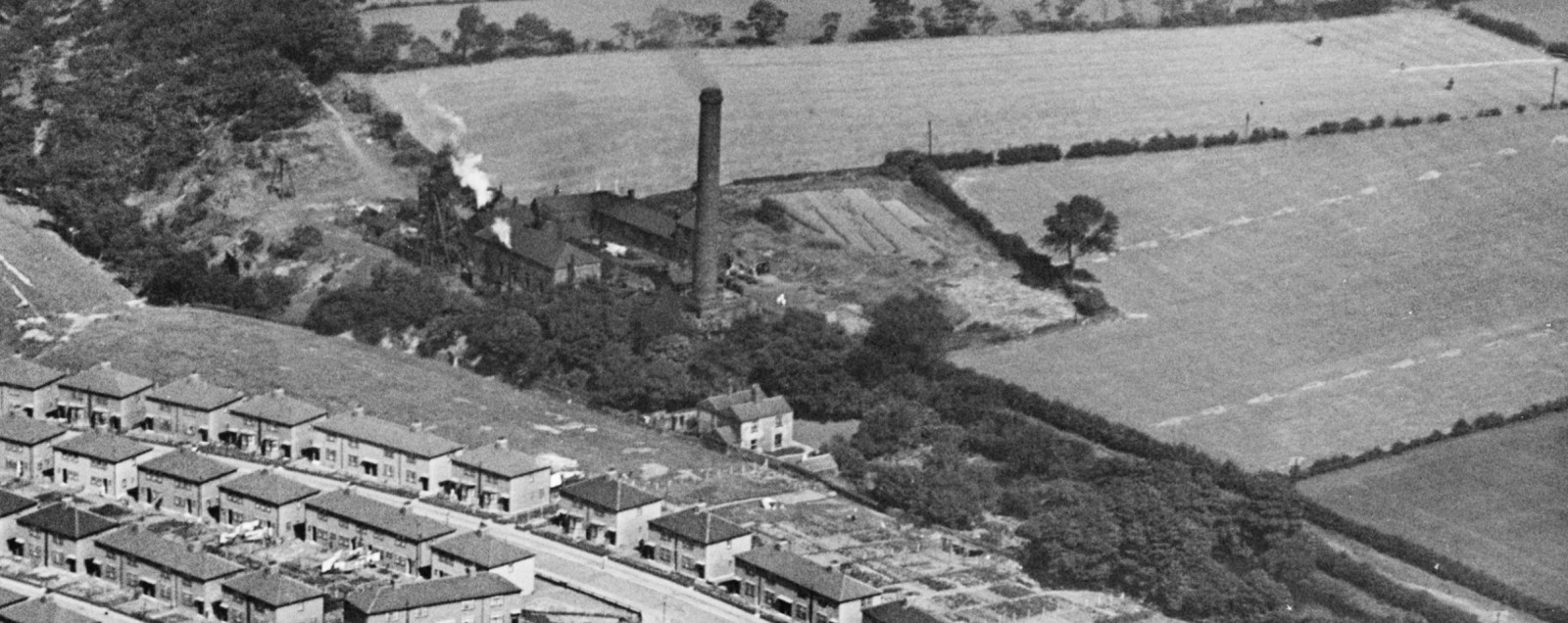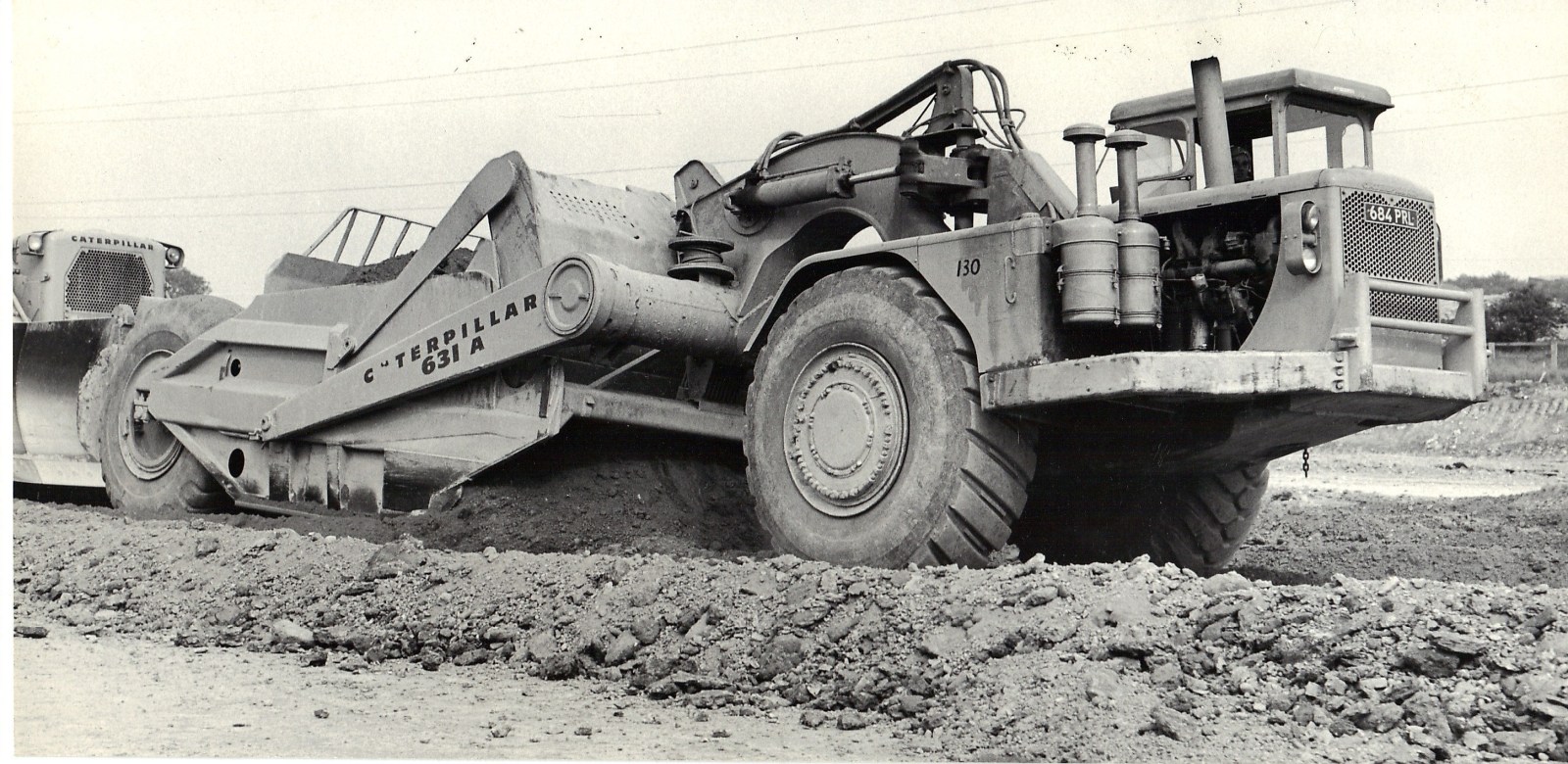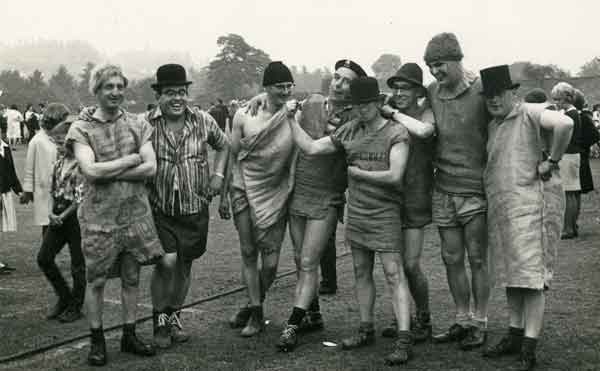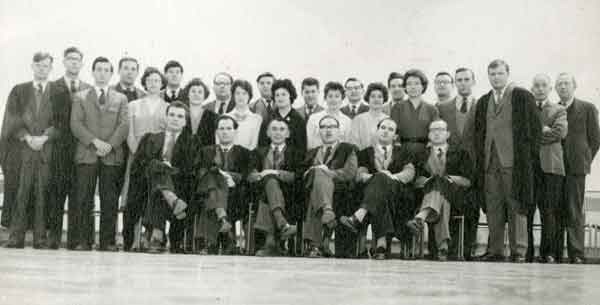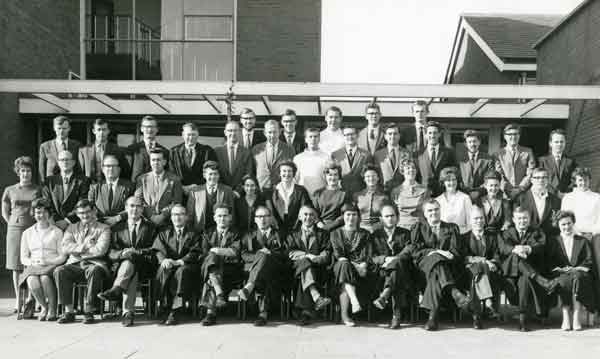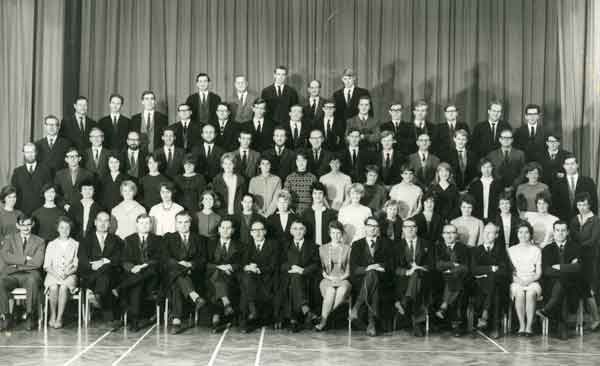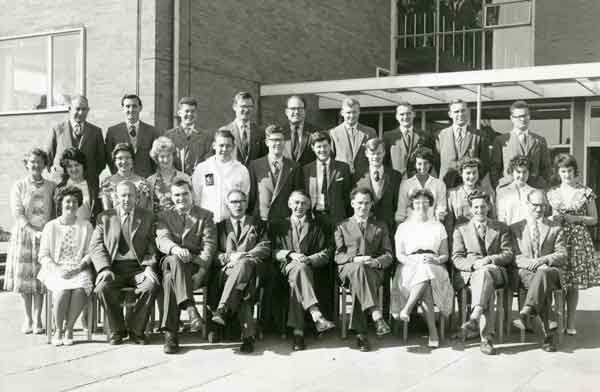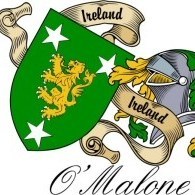Leaderboard
Popular Content
Showing content with the highest reputation since 27/03/24 in all areas
-
from the Sheffield Independent 15th January 1825 : " To Women in Dirty Weather. - If you should get tired, as very likely you may, of walking in your pattens, you will carry them in your hand ; in which case take care that they are sufficiently dirty, and then you may cause yourself to be respected by holding them out straight before you with all the length of your arm, pretty much in the attitude in which sign painters delight to exhibit red lions - you will thus set clear handsome black prints of a double OO , on the clothes of any rude fellow that obstructs your line of march."3 points
-
The brassworks company that made it did so free of charge, they also made the signs on the graveyard directing you to the grave. The replacement plaque on Loosemore Ave is now bonded to the wall instead of screwed.2 points
-
An article in the Tribune: How a Medieval Castle Became a modern City2 points
-
Shoes with very thick wooden soles. For ladies to keep their dresses out of the thick horse doings and mud when crossing the road.2 points
-
Not wishing to split hairs, but £1Mn spent on paving slabs @ £10 each would get you 100,000 slabs. 100,000 standard size 600mm x 450mm (or 24” x 18” in old money) slabs, laid end to end would stretch 60km (or 37miles in old money), which is the distance between Sheffield and Leeds! Now there’s a thought to conjure with!… 😆👍2 points
-
The shilling and copper tokens issued by the Overseers of the Poor were made by Younge and Deakin, Union street. They also made tokens for other towns such as Bradford and Doncaster, and were the largest coiners of tokens in the north of England. No gold or silver Sheffield tokens were issued after 1812 and those that had been issued previously were withdrawn, as that year passed on June 29th, was the "Act to Prevent the Issuing and Circulating of Pieces of Gold and Silver, or Other Metal, Usually called Tokens, except such as are issued by the Banks of England and Ireland respectively". On 27th June 1817 a further Act was passed to prohibit copper tokens and that they should be withdrawn before 1818. However there was a special privilege granted for Sheffield, allowing its Overseers of the Poor to extend the redemption of their copper penny tokens until 25th March 1823. John Younge and John Deakin were in partnership from 1811 to 1817. The partnership was probably dissolved in 1818 - John Younge left Sheffield and went to Peru, attracted by their silver mines, and worked as a physician near Lima. He returned to Sheffield, possibly with his native wife, in the early 1850's and lived in Hanover street until 1859. The other partner, John Deakin was by 1819 well established on his own account at Union street as a gilt plated and metal button manufacturer.2 points
-
A betting shop was proposed to open opposite us on Bellhouse Road in the 1950/60's and I remember someone coming to the house with a petition against it. Mum wasn't very pleased about it, thought it would attract "undesirables" Dad wasn't too concerned and sent them away with it unsigned. Found this, thought it might be of interest. Henry Steel (1832 - 1915), 'The Leviathian' s22479 Taken from Vanity Fair, 27th October, 1877. "Mr Steel is a native of Sheffield and a man of genius. He first displayed his powers in the pursuit of fishmongery, but being impelled to take up the national sport of horse-racing as a profession, he established himself as one of the benefactors to the backers of horses known as 'Bookmakers'. For some time he confined himself to making what we called 'silver books' , but before long he ran into a rein of gold and having received the 'stable commission' for St. Albans, he made a great coup and became a personage on the turf. Mr Peach married his sister, he married Mr Peach's sister and they all became partners in success. They are entrusted with most of the more important betting commissions and occupy so overpowering a position that they can command the market and influence the odds. The public personality of the partnership is found in Mr. Steel, whose face is known to every frequenter of race-courses, and whose transactions are so enormous as to have won for him the name of 'The Leviathian'. He is enormously rich-perhaps the richest man ever made by books. He is the proprietor of large steel and iron works at Sheffield, and not long ago he bought up the Archbishop of York's house in town, together with all its famous wines, as an appropraite residence for himself. He however, soon got tired of London society and retired again to Sheffield where he lives in opulent splendour. His account at the Westminster Bank is the largest there." Jehu Junior.1 point
-
My mother used to take my grandad's bets down to Popple St where a man used an entry to work from with a bookie's runner watching out for the police. I was only about 4 yr old but recall knowing we were doing something wrong.1 point
-
1 point
-
I’m unsure from what source(s) the original of this list was drawn up but as with many such compilations, it should be treated with caution as it may not be the comprehensive document researchers assume or would hope for. If as I understand, it’s supposed to include both survivors and the dead on the South African War I can confirm that there’s at least one omission …that of my Grandfather who lived in the St Vincent’s District of the City and served in SA between 1899/ 1902 as: 6493 Riley Joseph Pte 2/East Yorkshire Regt …his service being confirmed in the official Medal Rolls for that War….documents which, so far as I know, have only been available to the Public in recent ( ‘Ancestry’ ) times.1 point
-
A hundred years ago today ,Sergeant Loosemore of Gleadless ,died of the affects of his war wounds. He had been awarded a VC for his action in destroying a German post on his own ,after crawling through partially cut barbed wire with his Lewis gun. A well attended service was held at his grave attended by the Deputy Lord Lieutenant, amongst others.1 point
-
I'm scanning my Dad's thousands of slides and found this one of Pauldens illuminated by Christmas lights. There was no specific date other than "1960s" so that's as close as I can get I'm afraid. Compared to the B&W photo on the site, it looks like they added a vertical illuminated sign so maybe the B&W one was taken soon after opening?? No copyright, feel free to distribute.1 point
-
I was there that day with my Mother too! Didn't recognise posh-hatted and cheery Violet Carson though, I'd only ever seen her before as Ena Sharples with a hairnet and grumpy face! Can't remember how old I was either Stunmon, but I believe mid 1960s. I also recall the Woolworths back in those times. Specifically getting new pyjamas, a cuddly panda and the paperback 'Wind in the Willows' to take with me into the Royal hospital for tonsillectomy.1 point
-
1 point
-
The SYTM will be joined by friends from the Sheffield - National Emergency Services Museum, based at West Bar The SYTM has a most interesting collection of vehicles from the past, maintained by volunteers There will be other friends joining in on the day + stalls, and there is a cafe for a drink and a bite to eat.. EMERGENCY DAY, SUNDAY 14th APRIL, 10.30 - 4pm Waddington Way, Rotherham. S65 3SH1 point
-
1 point
-
Strictly a patten goes underneath a shoe to protect and elevate it. If the shoe simply had a thick wooden sole it would be a clog. Pattens with patten rings to raise the foot even higher: Clogs. Although these are Lancashire clogs (many apologies) Yorkshire clogs are identical.1 point
-
1 point
-
Drama documentary about the lives of some of the women who worked as buffers, polishing cutlery and silver in Sheffield. Filmed in old cutlery works and domestic settings the film follows a group of buffers from 1928 to the present. Includes archive footage and songs. Video on Youtube It's in 5 parts. The next one is linked on the right hand side under Related Videos I remember the buffers wearing brown paper in the 60's when I was in the works.1 point
-
The more northern pit lies on the 525' contour, the southern lies between the 625' and 650' so clearly the southern pit is a bit over 100' higher. Look also at the reservoirs, one has an embankment around its northern end, the other has a straight dam.1 point
-
1 point
-
1 point
-
Mansfield Road fire station was built in 1963. They cut the top off the tip to make a base. Some of the waste I think was put on the other side of the road to make it higher than it was. There was a tunnel under Mansfield road to the other side. That place, where the TA centre is, was in fact coke ovens. The rest of the tip was pulled down the hill and flattened by huge earth moving excavators in the 1960's. Big, MASSIVE trucks with big wheels and huge scraping buckets on the back. Something like this:1 point
-
1 point
-
1 point
-
1 point
-
If you fancy a day out with a difference this month! then pop down the M1 to Market Harborough STEAMPUNK DAY! SUNDAY 24th MARCH Come and enjoy the FREE alternative science fantasy event, there might even be some tea duelling!!! ' Don't know what it is, come down and have a look!!! ' It will be a day of Steampunk enthusiasts showing off their amazing creations & sharing their passion for the Artform. ( We are looking for creators, magicians, artists and stall holders to join us inside the Market on the day, if you are interested, for more information please email :- harboroughmarket@harborough.gov.uk )1 point
-
Out walking yesterday ( Tues 20 Feb ) I noticed in the footpath on Cemetery Road at Sharrow Head, the junction of Psalter Lane and Sharrow Vale Road, the service box shown in the attached photo. as far as I am aware and I have just looked at a map of the old tram network on the web, the trams didn't run up Cemetery Road to the top, but turned at the Washington Road junction to proceed to Nether Edge. What's the reason for that box outside 309 Cemetery Road ? I'm intrigued, may be a straightforward answer.1 point
-
1 point
-
Thought these images from Picture Sheffield may be of interest and jog a few memories. Mr. Hill features in some of the Staff photographs. Myers Grove Secondary School, Wood Lane, Stannington, 17th December 1964, later renamed Forge Valley Community School. https://www.picturesheffield.com/frontend.php?keywords=Ref_No_increment;EQUALS;s31116&pos=7&action=zoom&id=64165 18th February 1975. https://www.picturesheffield.com/frontend.php?keywords=Ref_No_increment;EQUALS;s31117&pos=8&action=zoom&id=64166 Was there a connection with Sheffield Rugby Union FC to Myers Grove School? This newspaper report from 1966 probably gives a clue as to why Rugby was so keenly followed. As was always the case in those days, depended on the PE teacher as to the sport preference https://www.picturesheffield.com/frontend.php?keywords=Ref_No_increment;EQUALS;s28748&pos=3&action=zoom&id=51627 Caption with the photograph, Sheffield Rugby Club's key to success, indoor training at Myers Grove Comprehensive School. wee pipe Pearson, (left) evades Clive Standring after taking a pass from Bob Wall as the backs swing into action. See Sheffield Morning Telegraph Friday 4th February 1966. Staff at Myers Grove Secondary School? Date possibly 1960/70'st08169 Left to right: Peter Jackson, Don Flockton, Doug Sawyer, Unknown, Unknown, Unknown, Doug Sanders, Unknown. These Staff photographs probably earlier than 1966 but were any still teaching at Myers Grove. t08170 Back Row: Unknown, ? Richards, Norman Southard, Don Flockton, John Milner, John Monkman, Cliff Priestley, Stuart Furniss and Cyril Russell Middle row: Philip Wardle (?), Peter Jackson, Dorothy Haydock, Janet Jeffrey, Chris Barnard, Joanne Jackson, Margaret Wright, Mrs. Hazlewood, Mel Jones, Joe Osgathorpe and Philip Wardle (?) Sitting: David Sanders, George Hunt, Mr. Hill, John Wray, Mike McGowan and Brain Sutcliffe. . t08171 Back row: Unknown, Howard Baxter, ? Richards, Unknown, Colin ? 2nd from back row: Philip Watson, Gordon Reece, Cyril Russell, Unknown, John Holyland, Doug Wardle, Bill Jamieson, Cliff Priestley, Peter Jackson, Stuart Furniss, Unknown, John Milner, Unknown. 3rd from back row: Chris Barnes, Unknown, Don Flockton, Mike Savage, John Monkman, Mary Russell, Mrs. Laundy, Erica Singleton, Dorothy Haydock, Jean Ward, Christine Baker, Margaret Wright, John Smith, Shirley Hedley Front row: Pat Robson, Doug Saw, Unknown, Brian Sutcliffe, George Hunt, John Wray, Mr. Hill, Molly Hattersley, Mike McGowan, David Sanders, Doug Emmett, Mel Jones, Janet Jeffrey. t08172 From back row: Peter Jackson, Unknown, Unknown, Unknown, Dave Marsh. 2nd row from back: Unknown, Norman Blaby, Unknown, Cliff Priestley, Dave Vincent, Unknown, John Smith, Unknown, Dave Crookes, Howard Baxter, Unknown, Unknown, Unknown, Unknown. 3rd row from back: Unknown, Unknown, Les Marshall, Stuart Furniss, Unknown, Unknown, Unknown, Doug Wardle, Barry Sampson, Philip Wharton, John Holyland. 4th row from back: Jim Ford, Eric Ward, Dilys Neat, Unknown, Unknown, Unknown, Unknown, Unknown, Carol Rutherford, Unknown, Unknown, Unknown, Mrs. Meakin, Unknown, Unknown. 5th row from back: Unknown, Ann Pilly, Daphne Green, Kath Bennett, Unknown, Helen Blaby, Mary Russell, Unknown, Dorothy Maddock, Sue ?, Josie Hutton, Unknown, Unknown, Chris Barnard, Mrs. Leaf. Front row; Doug Saw, Muriel Price, Unknown, Mel Jones, Doug Sanders, George Hunt, John Wray, Mr. Hill, Shirley Headley, Ken Mundon, Roy Yates, Brian Sutcliffe, Doug Emmett, Pat Robson, Tony Early. t08173 Back row: Joe Osgathorpe, Peter Jackson, John Monkman, Cyril Russell, Don Flockton, Mel Jones, Cliff Priestley, Unknown, Unknown. Middle row: Muriel Price (Secretary), Joanne Jackson, Pat Robson, Unknown, ? Richards, Unknown, Norman Southart, Philip Wharton, Carol Rotherforth, Janet Jeffrey, Margaret Wright, Chris Barnard. Front row: Mrs. Haywood/Hazlewood, Doug Wardle, David Sanders, John Wray, Mr. Hill, George Hunt, Dorothy Haydock, Stuart Furniss, Les Marshall.1 point
-
Interesting website which focus on Porter Brook from Hunters Bar down to Sheffield Station and the River Sheaf from Millhouses Park to the confluence with the River Don at Castlegate. It's also a registered charity, which you can join. Sheaf and Porter Trust1 point
-
As above, there was a plan to have a route over Psalter Lane, in fact a junction was installed at the Ecclesall Road for a few years. There were also electricity feeder cables for the tramway that didn't necessarily follow the actual route, this could be one forming part of a link between Ecclesall Road and Nether Edge.1 point
-
The Sheffield Corporation Act of 1900 gave powers for a number of tram routes to be constructed, some of which were never followed up. One of these was the route from the junction of Cemetery Road and Washington Road, along the upper part of Cemetery Road and Psalter Lane to Banner Cross, with a link along Cowlishaw Road and Junction Road to Hunters Bar. Discussion of this progressed as far as a proposal in May 1900 to pave Cemetery Road in granite when the tram lines from Washington Road to Sharrow Head were laid. During 1908 Psalter Lane residents held meetings against the proposed extension, they said that the existing Ecclesall and Nether Edge services were adequate and that Psalter Lane was the only main route out of Sheffield unspoiled by tramcars. There were calls in council meetings to veto the extension, for which authorisation had been renewed in a 1907 Act, and in 1909 the plan for this extension was abandoned. By then the Corporation were trialling motor buses for new routes, for which they had received the authorisation in 1907 . The electricity supply system was initially shaped by the huge requirements of the tramways. In 1902 the Sheaf Street power station was changed over to 50Hz generation, more suitable for lighting. In 1904 the Neepsend power station came into use.1 point
-
Happy 10th birthday to the 'Drainspotting' thread Looking back I did think that speed was of the essence with the road re-surfacing programme beginning around then, however the vast majority of early finds are still in situ. Not all, but 80-90% I would say. Hopefully some increased awareness resulted and, if so, it's been worth it. The earliest date found on drain covers (or pavement features of any kind) remains 1890. New finds are rare these days, but do happen occasionally to my continued excitement! Many thanks to all the contributors over the years1 point
-
1 point
-
JARVIS COCKER Jarvis Branson Cocker (born 19 September 1963, in Sheffield, England) is an English musician, best known for fronting the band Pulp. Jarvis came from a musical family (his father and uncle were musicians). Fellow Sheffield musician Joe Cocker was a friend of the family and babysat for Jarvis on occasions, though they are not related. Pulp Jarvis founded "Arabacus Pulp" at the age of fifteen while he was still at The City School. After numerous line-up changes, and a shortening of the name to just "Pulp", they eventually found fame in the 1990s with the success of the albums His 'n' Hers (1994) and Different Class (1995). Cocker invaded the stage at the 1996 Brit Awards to protest against Michael Jackson's performance. Jackson performed surrounded by worshipping children and a rabbi, while making 'Christ-like' poses and performing his then-recent hit, Earth Song. Cocker and his friend Peter Mansell (a former Pulp member) performed an impromptu stage invasion in protest. In the ensuing confusion, as others attempted to eject Cocker from the stage, a child performer received minor injuries. Cocker was later detained and interviewed by the police on suspicion of assault and found himself being defended by the comedian and former solicitor, Bob Mortimer. Cocker was subsequently released without charge. Opinions from the press on Cocker's actions were mixed. The 2 March 1996 edition of Melody Maker, for example, suggested Cocker should be knighted, while Cocker's friend Noel Gallagher claimed "Jarvis Cocker is a star and he should be given MBE". Noel Gallagher said of Jackson's behaviour "For Michael Jackson to come over to this country after what's all gone on - and I think we all know what I'm talking about here - to dress in a white robe, right, thinking he's the Messiah - I mean who does he think he is? Me?" However, other journalists and the organisers of the Brit Awards were outraged at what they perceived as a bizarre self-promotional stunt that had endangered the on-stage performers. In response to the ensuing media scrutiny of the action, Jarvis responded, "My actions were a form of protest at the way Michael Jackson sees himself as some kind of Christ-like figure with the power of healing... I just ran on the stage... I didn't make any contact with anyone as far as I recall." However, the resulting press attention saw the band's record sales soar and a waxwork statue of Jarvis Cocker, which costs �30,000, was placed in Rock Circus, London. Cocker was also renowned for being a witty observer of the cultural scene. He was a frequent guest on TV shows in the 1990s, as well as hosting an arts series for the BBC. Jarvis co-wrote several songs (Walk Like A Panther, 1st Man in Space, Drive Safely Darlin', Stars On Sunday, and Happy Birthday Nicola)) on The All Seeing I's album "Pickled Eggs & Sherbet", released in 1999. He contributes lead vocals to Drive Safely Darlin. Two more albums were released (This Is Hardcore and We Love Life) to critical acclaim, though neither achieved the commercial success of Different Class, Pulp then released a greatest hits album and went on hiatus. Jarvis moved to Paris with his wife, Camille Bidault-Waddington, with whom he has a son, Albert. Post-Pulp Cocker also directed some music videos, most notably On by Aphex Twin, Sudden Rush by Erlend �ye and Aftermath by Nightmares on Wax. He re-emerged in 2003 to promote a new album, under the pseudonym "Darren Spooner", for his new band called Relaxed Muscle. Also in 2003, he appeared on the Richard X album Richard X Presents His X-Factor Vol. 1. 2004 then brought Cocker briefly back into the limelight with two collaborations with Nancy Sinatra on her new album, as well as a collaboration with Marianne Faithfull on her album Kissin' Time, with the song "Sliding through Life on Charm." In 2005 Jarvis Cocker co-wrote three tracks (La Degustation, Basque Country & Fred de Fred) on French Sheffield-based electronic duo The Lovers' debut album "The Lovers". He has also contributed to the soundtrack for Harry Potter and the Goblet of Fire, writing and performing three tracks entitled "This is the Night", "Do The Hippogriff" and "Magic Works". He appeared briefly in the film as lead singer of the wizard pop act the Weird Sisters (unnamed in the film owing to a legal scuffle with real-life group the Wyrd Sisters). The fictitious group also featured Jonny Greenwood and Phil Selway from Radiohead, Steve Mackey from Pulp, Jason Buckle from Relaxed Muscle and Steve Claydon from Add N to (X). That same year he also covered "I Can't Forget" by Leonard Cohen as part of the tribute show for the film Leonard Cohen: I'm Your Man. In 2006 Cocker appeared on albums Monsieur Gainsbourg Revisited (song "I Just Came to Tell You That I'm Going", co-performed with Kid Loco) and Rogue's Gallery: Pirate Ballads, Sea Songs, and Chanteys (song "A Drop of Nelson's Blood"). His song "Running the World" appeared over the closing credits of the film Children of Men. Also in 2006, along with Steve Mackey, he 'curated' the 2-CD Compilation, The Trip, which features a wide selection of tracks by artists as varied as The Fall, Gene Pitney, The Beach Boys, and The Polecats. He also co-wrote lyrics on the Charlotte Gainsbourg album 5:55, with Neil Hannon and members of Air. On October 12th 2006, a fictional Jarvis Cocker was a lead character in a drama on BBC Radio 2, as part of their 'Imagine' competition. Jarvis Cocker is now following a solo career - his debut album titled Jarvis came out in the UK on November 13, 2006. This is said to have been produced[citation needed] with Sam Lockwood and John Watson (his school friends from Central St Martins) who also helped to write the lyrics to a couple of songs on the album. In March 2007 he will appear on French band Air's new album "Pocket Symphony." LINKS Jarvis Cocker's Myspace Page - http://www.myspace.com/jarvspace1 point
-
It was about the actual SQUARE but it doesn't have life without the people who used it.1 point
-
I recall the hour prior to the city centre ‘waking up’, where you couldn’t walk a couple of yards without someone passing the time of day with you, then there was Pond Street Norah, who had a vocabulary that would make a sailor blush, who was the guy in the black and stripes and Homburg hat, was it the Duke of Darnall? John, the Town Hall bobby controlled his beat with vigour, even superior officers were very deferential when addressing him, I well recall asking his advice when I mentioned the new phenomena of shop lifting to him, I had a fairly senior position with a major retail chain that was losing close to the amount it was selling, quick as a flash John replied “Let the beat bobbies have the use of your tea rooms Dave”, job done the look on the suspects faces when a couple of uniformed bobbies walked though the shops was a picture. True there was more litter/wastage in those days as we hadn’t quite cracked the new ‘throw away’ society, thing like cardboard and othe packaging was left outside shops with no actual places to store it, however the council soon got it’s act together, along with the street sweepers, who did a cracking job. I apologise for having hands on experience of the city centre in the 1960’s, it obviously doesn’t mirror some folk’s imaginings.1 point
-
Arnold and his wife & child lived for a time on Stannington Rd, but I haven't yet found out exactly where. Due to his disabilities he struggled to get up the stairs of this 3 storey house and so the Rotary Club kindly supplied him with a wooden hut for him to live in. This was positioned in his garden. After his death, this hut found its way to the Rotary Club in Castleton where it stands today, and is used to holiday disadvantaged children. Heres a link to their website.. http://www.rotarycentrecastleton.co.uk So off I went for a ride out to Castleton to see it. The Rotary centre is located just off the tight 'S'bend in the centre of Castleton. Turn right as you enter the first left bend (from Sheffield) and follow this road, going right where it forks. Its a rough bumpy track with the club at the very end. When I arrived there were people there preparing it for a wedding the next day, but they kindly let me have a look inside the hut.. At one end on the wall is a plaque dedicated to Arnold.. This was a very enjoyable day, it was great to see that these heros are being remembered, and it was lovely to see some of the locations associated with this brave man.1 point


